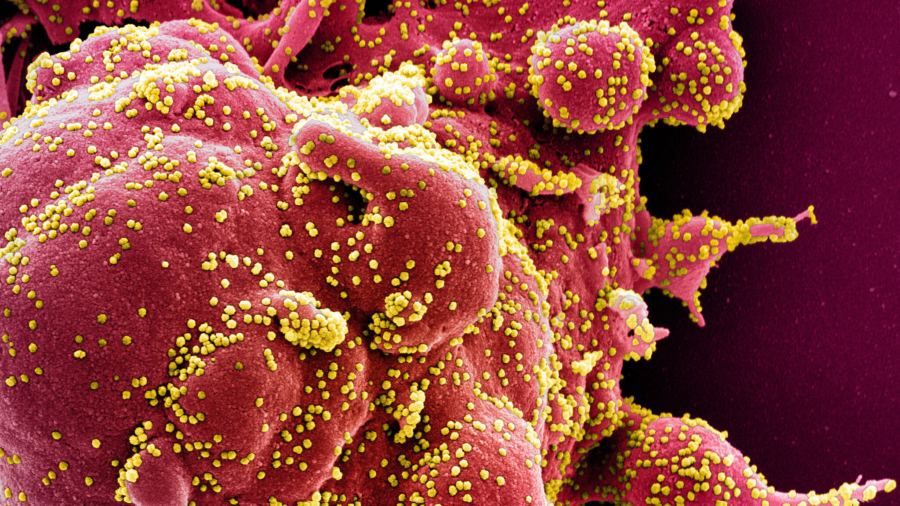Researchers said in a newly published preliminary study that one of Omicron’s dozens of mutations likely arose when the variant picked up a bit of genetic material from another virus, possibly one that causes the common cold, potentially making the new strain more transmissible yet milder in impact.
The study, which has not yet been peer reviewed and was published on Dec. 3 in OSF Preprints, found that Omicron is the only CCP (Chinese Communist Party) virus variant to contain an “insertion mutation,” dubbed ins214EPE, which the researchers said is likely of human genomic or viral origin.
The researchers put forward the hypothesis that the insertion mutation may have developed in a person simultaneously infected with SARS-CoV-2, also known as the CCP virus, and the HCoV-229E coronavirus, which can cause the common cold.
“It is plausible that the Omicron insertion could have evolved in a co-infected individual,” the researcher team, led by Venky Soundararajan of Nference, a Cambridge, Mass.-based firm that analyzes biomedical information, wrote in the study.
Soundararajan told Reuters that, by inserting into itself this particular snippet of genetic material, the Omicron variant might be making itself look “more human,” which would help it sidestep the immune system. A possible implication is that Omicron could transmit more easily while causing milder or asymptomatic illness.
With competing hypotheses that Omicron may have spent some time evolving in an animal host, the researchers said more study is needed to confirm the origins of Omicron’s mutations and their impacts on function and transmissibility.
“There is a need to understand the function of the Omicron insertion and whether human host cells are being exploited by SARS-CoV- 2 as an ‘evolutionary sandbox’ for host-virus and inter-viral genomic interplay,” they wrote.
While little is still known about the new variant, South African scientists reported that Omicron seems more likely than earlier variants to cause reinfections among people who already had COVID-19 and recovered.
“Previous infection used to protect against Delta, and now with Omicron it doesn’t seem to be the case,” one of the researchers, Anne von Gottberg of the University of Witwatersrand, said at a World Health Organization briefing on Dec. 2.
Dr. Angelique Coetzee of the South African Medical Association was cited in media reports as saying that patients with Omicron have had relatively minor symptoms, characterizing them as “unusual but mild.”
“It presents mild disease, with symptoms being sore muscles and tiredness for a day or two not feeling well,” Coetzee said.
“So far, we have detected that those infected do not suffer the loss of taste or smell. They might have a slight cough. There are no prominent symptoms. Of those infected, some are currently being treated at home,” she added.
The emergence of Omicron has set public health officials on edge, with a number of countries reimposing travel bans and other restrictions in response.
Reuters contributed to this report.
From The Epoch Times


